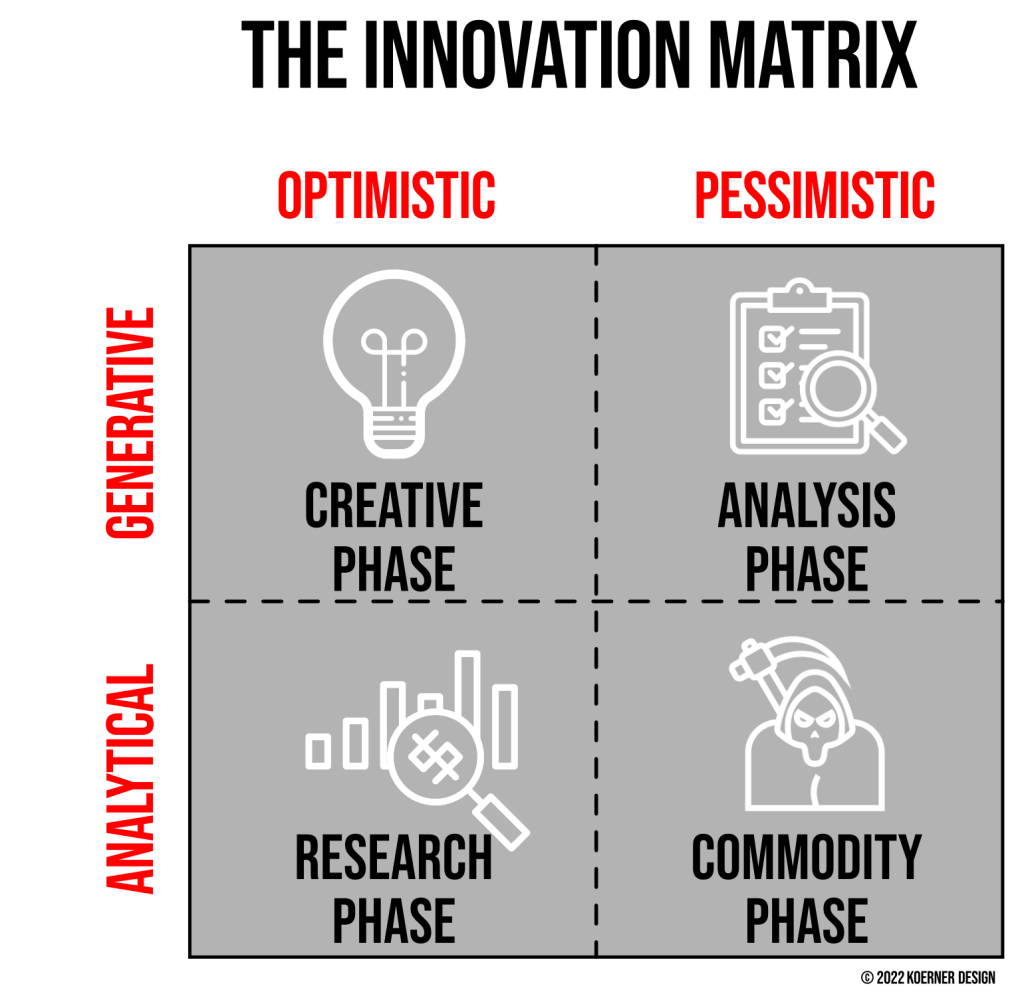A recurring challenge in innovation process management is interfacing with stakeholders who have various levels of risk aversion and either a generative (creative) mindset or an analytical (deductive) mindset. This is sometimes dumbed-down to a binary of “creatives” vs “bean counters”, but in fact, there is a complex interplay of risk acceptance vs creativity amongst various stakeholders on innovation projects.
If we plot methodology on the vertical axis – generative vs analytical – and outlook on the horizontal – optimistic vs pessimistic – we get a quadrant that shows the different attitude phases of an innovation program.

Let’s look at each attitude quadrant:
- OPTIMISTIC X GENERATIVE: This is a “creative” phase where an individual or team considers a wide ranging set of inputs to synthesize novel opportunities.
- OPTIMISTIC X ANALYTICAL: This is a “research” phase where an individual or team studies datasets to find hidden but highly relevant information.
- PESSIMISTIC X GENERATIVE: This is an “analysis” phase where teams play devil’s advocate to analyze and predict scenarios that can kill or slow an innovation.
- PESSIMISTIC X ANALYTICAL: This is the commodity trap and is the death of innovation, where a team meekly follows market trends or blindly follows customer requests.
I borrow from Stefan Mumaw’s thoughts about generating successful ideas: A good idea has high degrees of both novelty and relevance. I also borrow from Natalie Nixon’s concept that innovation requires a blend of wonder and rigor. Combined, a good innovation process structurally implements wonder to generate novelty, and implements rigor to ensure relevance.
So within the innovation matrix, programs need to blend 3 of the 4 quadrants – generating optimistic grand ideas, generating pessimistic but needed defensive ideas, and analytically identifying optimistic market opportunities, but most avoid the 4th quadrant – fearfully sticking with known commodities.
If you could measure these attitudes, a successful innovation program might plot like this:

If you found this thought provoking, you might want to also check out my piece “What’s the value of innovation management?“
